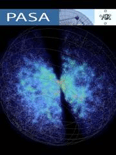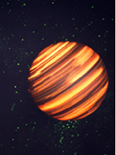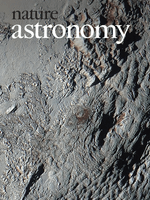
PUBLICATIONS OF THE ASTRONOMICAL SOCIETY OF JAPAN
Scope & Guideline
Exploring the universe, one publication at a time.
Introduction
Aims and Scopes
- Astrophysical Processes and Phenomena:
Research on various astrophysical processes, including star formation, black hole dynamics, and supernova explosions. The journal frequently publishes studies that explore the physical mechanisms behind these phenomena, contributing to a deeper understanding of the universe. - Observational Astronomy:
Papers often focus on observational data from ground-based and space telescopes, utilizing advanced techniques such as spectroscopy, photometry, and imaging to gather insights into celestial objects and systems. - Theoretical Models and Simulations:
The journal includes significant contributions from theoretical astrophysics, particularly in modeling complex systems such as galaxy formation, stellar evolution, and the dynamics of accretion disks around compact objects. - Interdisciplinary Approaches:
Research that integrates concepts from physics, chemistry, and computational science to address astronomical questions, highlighting the journal's commitment to a multifaceted understanding of celestial phenomena. - Astrobiology and Cosmology:
Exploration of the origins of life in the universe and the overall structure and evolution of the cosmos, with an emphasis on how these broad themes intersect with observational and theoretical work in astronomy.
Trending and Emerging
- Multi-wavelength Observations:
There is a growing emphasis on multi-wavelength studies that combine data from various parts of the electromagnetic spectrum, allowing for more comprehensive analyses of astronomical objects and events. - Machine Learning and Data Science Applications:
The integration of machine learning techniques in astronomical research is on the rise, reflecting a trend towards data-driven discoveries and improved analysis methods for large datasets. - High-energy Astrophysics:
Research in high-energy phenomena, such as gamma-ray bursts and X-ray binaries, is increasingly prominent, indicating a renewed interest in extreme astrophysical events and their implications for our understanding of the universe. - Star Formation and Molecular Cloud Dynamics:
Recent studies are focusing on the dynamics of star formation and molecular clouds, particularly the role of cloud-cloud interactions and environmental factors that trigger high-mass star formation. - Exoplanetary Systems and Astrobiology:
Research related to exoplanets, their atmospheres, and potential habitability is gaining momentum, highlighting a trend towards understanding the conditions for life beyond Earth.
Declining or Waning
- Solar Physics:
Although solar phenomena have been a significant area of research in the past, recent publications indicate a declining focus on solar physics topics, possibly due to a shift towards more global or cosmological studies. - Historical Astronomy:
The exploration of historical records and their implications for modern astronomy has seen a decrease in recent papers, suggesting that researchers may be prioritizing contemporary observational and theoretical studies. - Classical Stellar Evolution Models:
Research focused on traditional models of stellar evolution appears to be less prevalent, as newer studies increasingly incorporate more complex, multi-physics approaches that account for various environmental factors. - Planetary Science:
While planetary science remains important, there may be a waning interest in certain traditional aspects, such as the detailed study of individual solar system bodies, as the field shifts towards exoplanetary systems and their implications for astrobiology.
Similar Journals

Kinematics and Physics of Celestial Bodies
Advancing Knowledge in Astronomical PhysicsKinematics and Physics of Celestial Bodies is a prominent journal published by PLEIADES PUBLISHING INC, dedicated to the exploration and understanding of celestial mechanics and the physical properties of astronomical bodies. With an ISSN of 0884-5913 and an E-ISSN of 1934-8401, this journal has established itself as a resource for researchers in the fields of astronomy, astrophysics, and space science since its inception in 2009. The journal is indexed in Scopus, where it currently ranks in the fourth quartile for both Astronomy and Astrophysics and Space and Planetary Science, making it a valuable platform for scholarly discourse despite its ranking. Its scope encompasses a range of topics related to the kinematics and physical characteristics of celestial objects, aiming to facilitate a better understanding of their dynamics and interactions within the universe. Although it does not operate under an open access model, the journal provides essential insights and findings, catering to the academic needs of researchers, professionals, and students engaged in the study of the cosmos. The journal's commitment to advancing knowledge in the various aspects of celestial physics ultimately contributes to the broader scientific community's endeavors.

PUBLICATIONS OF THE ASTRONOMICAL SOCIETY OF AUSTRALIA
Connecting Researchers to the Cosmos Since 1996.Publications of the Astronomical Society of Australia, published by Cambridge University Press, stands as a distinguished platform for advancing knowledge in the realms of Astronomy, Astrophysics, Space, and Planetary Science. Hemmed in the United Kingdom, this journal is recognized for its outstanding contributions, reflected in its status as a Q1 journal in both Astronomy and Astrophysics, along with Space and Planetary Science categories as of 2023. With a solid impact factor, it ranks impressively at #23 within its Scopus category, firmly placing it in the competitive 75th percentile. This publication facilitates open discourse and innovative research from its inception in 1996 to the present year of 2024, providing an essential resource for researchers, professionals, and students eager to deepen their understanding of cosmic phenomena. By embracing rigorous peer-review standards and a commitment to scholarly excellence, the journal not only contributes to the scientific community but also fosters the next generation of astronomical research.

OBSERVATORY
Illuminating the Universe: A Hub for Astronomical ResearchOBSERVATORY, an esteemed journal in the realms of Astronomy and Space and Planetary Science, is published from the Rutherford Appleton Laboratory in the United Kingdom. With an ISSN of 0029-7704, this journal has provided a platform for innovative research and findings, particularly during its active publishing years from 1996 to 2013, 2015, and from 2017 to 2024. Although classified in the lower quartiles (Q4) in the latest 2023 category rankings for Astronomy and Astrophysics and Space and Planetary Science, the journal serves as a vital resource for researchers and students aiming to contribute to these fields. While it currently does not offer open access options, it continues to attract attention for its focus on both theoretical and applied aspects of astronomy. With a growing compilation of research, it aims to foster collaboration and knowledge dissemination among scholars dedicated to unraveling the complexities of our universe.

Annual Review of Astronomy and Astrophysics
Advancing the frontiers of cosmic knowledge.Annual Review of Astronomy and Astrophysics is a premier academic journal published by Annual Reviews, dedicated to advancing knowledge in the fields of astronomy and astrophysics. With an impressive impact factor and recognition as a Q1 journal in both Astronomy and Astrophysics, as well as Space and Planetary Science, it stands amongst the top-ranked publications globally with Scopus Rankings placing it in the 99th percentile. The journal spans over three decades of scholarly contributions from 1990 to 2023, creating a rich repository of knowledge for researchers, professionals, and students alike. Although it does not offer Open Access, its rigorous peer-review process ensures the utmost quality and relevance of published articles, making it an essential resource for anyone seeking to stay at the forefront of developments in the cosmos. With its dedication to covering the forefront of research and essential reviews, the Annual Review of Astronomy and Astrophysics is vital for those engaged in exploring the universe and its phenomena.

Advances in Astronomy and Space Physics
Bridging Disciplines for a Deeper Understanding of Space.Advances in Astronomy and Space Physics is an esteemed journal dedicated to the exploration and dissemination of research in the expansive fields of astronomy and space science. Published by Taras Shevchenko National University of Kyiv, this journal provides a platform for researchers, professionals, and students to share groundbreaking studies and innovations. With an ISSN of 2227-1481, it covers a wide range of subjects including astrophysics, planetary sciences, and space exploration technologies, thereby fostering interdisciplinary collaboration. Although not an Open Access journal, it maintains a commitment to high-quality, peer-reviewed content that contributes significantly to the advancement of scientific knowledge. The journal's mission is to promote sustainable practices in space research while also exploring the implications of discoveries on Earth and beyond. By maintaining rigorous publication standards, Advances in Astronomy and Space Physics aims to serve as a critical resource for those involved in the ever-evolving study of our universe.

Journal of High Energy Astrophysics
Charting New Territories: The Science of High Energy AstrophysicsThe Journal of High Energy Astrophysics, published by Elsevier, is a premier platform for groundbreaking research in the fields of astrophysics and high-energy phenomena. With an ISSN of 2214-4048 and an E-ISSN of 2214-4056, this journal has quickly established itself as a leader since its inception in 2014. Operating out of the Netherlands, it is recognized for its rigorous peer-review process and high-quality publications, earning an impressive Q1 ranking across multiple domains, including Astronomy and Astrophysics, Nuclear and High Energy Physics, and Space and Planetary Science in 2023. With a Scopus rank of 12 out of 90 in the Astronomy and Astrophysics category, and being positioned in the 87th percentile, the journal plays a pivotal role in disseminating advancements and fostering collaboration among researchers, professionals, and students. Though the journal is not open access, it offers robust subscription options for institutions and individuals seeking to dive into the latest discoveries and theories in high-energy astrophysics.

JOURNAL OF ASTROPHYSICS AND ASTRONOMY
Unraveling the Secrets of Space and Time.JOURNAL OF ASTROPHYSICS AND ASTRONOMY, published by the Indian Academy of Sciences, stands as a pivotal resource for researchers and professionals in the fields of astrophysics and astronomy, with a rich history of publication dating back to 1980. This esteemed journal aims to disseminate high-quality research, fostering advancements in how we understand celestial phenomena, space environments, and planetary sciences. With a current Impact Factor that places it in the Q3 category for both Astronomy and Astrophysics and Space and Planetary Science, it maintains a crucial role in the global academic community, particularly within India. Although not an open access journal, its scholarly contributions are vital for both emerging and established researchers striving to push the boundaries of our knowledge in the cosmos. The journal is indexed in Scopus, ranking 56th in Astronomy and Astrophysics and 72nd in Space and Planetary Science, reflecting its ongoing significance and reach in the scientific dialogue.

Contributions of the Astronomical Observatory Skalnate Pleso
Cultivating Curiosity: A Gateway to the Universe's WondersContributions of the Astronomical Observatory Skalnate Pleso, published by the Slovak Academy of Sciences Astronomical Institute, serves as a vital platform for the dissemination of research in the realm of Astronomy and Astrophysics. With its ISSN number 1335-1842 and E-ISSN 1336-0337, this esteemed journal aims to foster scientific discourse and innovation among researchers, professionals, and students alike. Although it currently holds a Q4 quartile ranking in its field as of 2023, the journal encourages contributions that enhance our understanding of universe dynamics and celestial phenomena through rigorous research methodologies. Spanning from its inaugural year in 2007 to the projected continuation through 2024, it integrates local insights from Slovakia with broader international endeavors in astronomy. The journal promotes an open-access approach, providing scholars unrestricted access to valuable findings and discussions, thereby advancing the boundaries of astronomical knowledge.

Galaxies
Fostering innovation in the study of the cosmos.Galaxies, published by MDPI, is a premier open-access journal dedicated to the vibrant field of Astronomy and Astrophysics. Established in 2013, with a strong commitment to making scientific research accessible, this journal has quickly garnered recognition, achieving a notable impact factor and ranking in the Q2 Quartile of its category as of 2023. With a Scopus ranking of #31 out of 90 in the domain of Astronomy and Astrophysics, and a commendable percentile rank of 66, Galaxies serves as a vital platform for researchers, professionals, and students engaged in astronomical studies and related fields, facilitating the dissemination and discussion of groundbreaking research. The journal covers a wide array of topics including galactic dynamics, cosmology, and observational astronomy, encouraging interdisciplinary collaboration and innovation within the scientific community. Located in Basel, Switzerland, and adhering to the highest publishing standards, Galaxies is committed to enriching the academic discourse in astronomy, making a significant impact on both current and future explorations of our universe.

Nature Astronomy
Unlocking the Secrets of the Universe: A Platform for Innovative Astronomical Science.Nature Astronomy, published by NATURE PORTFOLIO, stands at the forefront of the field of Astronomy and Astrophysics. Since its inception in 2016, this esteemed journal has rapidly ascended to a prestigious position, achieving a Q1 ranking in the Astronomy and Astrophysics category and securing an impressive 6th place out of 90 journals in the Scopus rankings, placing it in the 93rd percentile. With a focus on disseminating pioneering research, Nature Astronomy provides a vital platform for the dissemination of high-quality, impactful findings across various aspects of astronomical science. Researchers, professionals, and students alike will find a wealth of knowledge and innovative perspectives within its pages, enabling them to stay ahead in a rapidly evolving field. Although it does not offer open access, the journal's commitment to excellence and its influence in shaping the future of astronomical research make it an indispensable resource for anyone serious about advancing their understanding of the cosmos.